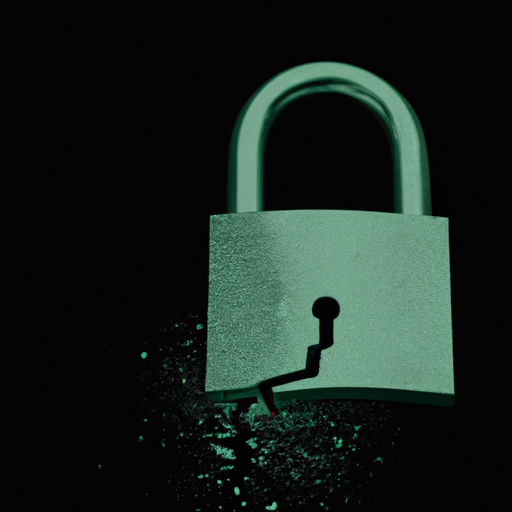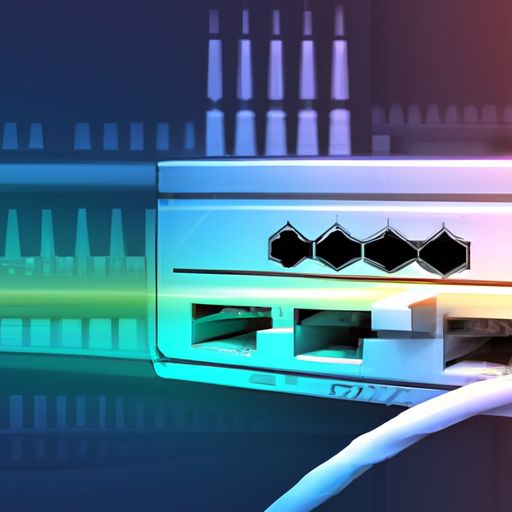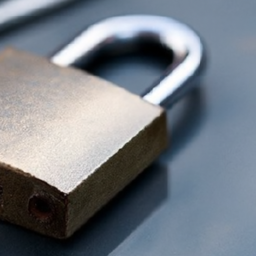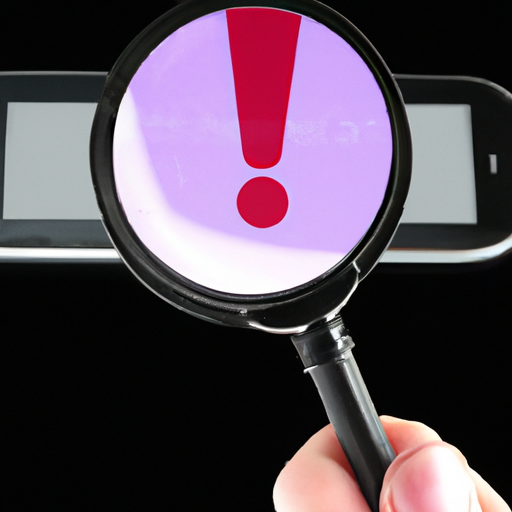What Is The Difference Between A Data Breach And A Data Leak?
In today’s digital world, where personal information is constantly being exchanged and stored, it’s essential to understand the distinction between a data breach and a data leak. While the terms may seem similar, they have distinct definitions and implications that can greatly impact individuals and organizations. A data breach refers to the unauthorized access or acquisition of sensitive data, often as a result of a cyber-attack or security vulnerability. On the other hand, a data leak involves the unintentional exposure or disclosure of sensitive information, usually due to human error or negligence. Whether it’s a malicious act or an innocent mistake, knowing the difference between these two terms is crucial in protecting your data and maintaining your privacy.
Understanding Data Breach and Data Leak
Data breaches and data leaks are two terms that are often used interchangeably, but they actually have distinct definitions and implications. In order to fully understand the differences between these two concepts, it is important to first define each term separately.
Definition of Data Breach
A data breach refers to the unauthorized access, acquisition, or disclosure of sensitive and confidential information. This can occur either as a result of a deliberate attack by an external party or due to internal negligence or error. When a data breach occurs, it means that there has been a breach in the security measures put in place to protect the data.
Definition of Data Leak
On the other hand, a data leak refers to the intentional or unintentional release of data to an unauthorized party or parties. Unlike a data breach, which typically involves a breach in security measures, a data leak may occur due to human error or negligence, such as sending an email to the wrong recipient or misplacing a physical document.
Causes of Data Breach and Data Leak
Understanding the causes of data breaches and data leaks can help individuals and organizations take proactive measures to prevent such incidents from occurring.
Cyber Attacks
One of the most common causes of data breaches is cyber attacks. These attacks can take various forms, including hacking into computer systems, exploiting vulnerabilities in software or networks, and using malware or phishing techniques to gain unauthorized access to sensitive data. Cyber criminals are constantly evolving their tactics and techniques, making it essential for individuals and organizations to stay vigilant and keep their systems protected.
Human Error
Another significant cause of data breaches and leaks is human error. This can include actions such as misconfiguring security settings, falling for phishing scams, or accidentally deleting or misplacing important files. Human error is difficult to completely eliminate, but it can be mitigated through proper training, education, and the implementation of strict data protection protocols.
Malicious Insiders
In some cases, data breaches and leaks may occur as a result of malicious insiders. These individuals have authorized access to sensitive information but choose to misuse or disclose it for personal gain or other nefarious purposes. Malicious insiders can be employees, contractors, or anyone else with legitimate access to the data. Implementing strong access controls, monitoring systems for suspicious activities, and conducting regular audits can help detect and prevent incidents involving malicious insiders.
Physical Theft or Loss
Data breaches and leaks can also occur when physical storage devices, such as laptops, smartphones, or USB drives, are lost or stolen. If these devices contain sensitive or confidential information and are not properly protected, the data can easily fall into the wrong hands. Encrypting data on storage devices, implementing strong physical security measures, and regularly backing up data to secure servers can help mitigate the risks associated with physical theft or loss.
Scope of Impact
The scope of impact of a data breach or leak can vary depending on multiple factors.
Size and Sensitivity of Data
The size and sensitivity of the data involved in a breach or leak play a significant role in determining the extent of the impact. For example, a breach that exposes personal financial information, such as credit card numbers or social security numbers, can have far-reaching consequences for individuals and potentially lead to financial fraud or identity theft. Similarly, the loss or unauthorized disclosure of sensitive corporate data, such as trade secrets or customer lists, can have severe implications for businesses, including financial losses and damage to their reputation.
Extent of Unauthorized Access
The extent to which unauthorized parties gain access to the breached or leaked data also affects the scope of impact. In some cases, the breach may be limited to a small subset of data or may only involve superficial access. However, in other instances, the breach can involve a large volume of data or grant the attackers deep access to sensitive systems and information. The greater the extent of unauthorized access, the higher the potential risks and consequences.
Potential Consequences
Data breaches and leaks can have a wide range of potential consequences for individuals, organizations, and even society as a whole. Some common consequences include financial losses, reputational damage, legal liabilities, and regulatory penalties. In addition, individuals affected by a breach may experience emotional distress, loss of privacy, and the need to take corrective actions such as cancelling credit cards or monitoring their credit reports.
Detection and Response
Prompt detection and effective response are crucial in mitigating the risks and minimizing the impact of a data breach or leak.
Detection of Data Breach/Leak
Detecting a data breach or leak can be challenging, as attackers often employ sophisticated techniques to hide their activities. However, there are various measures that can be put in place to improve detection capabilities. This includes implementing robust monitoring systems that track and analyze network traffic, implementing intrusion detection and prevention systems, and closely monitoring system logs for any suspicious activities or indicators of compromise.
Response to Data Breach/Leak
Once a breach or leak has been detected, organizations must respond swiftly and decisively in order to minimize the damage and prevent further unauthorized access. The response typically involves several key steps, including containing the breach by isolating affected systems or networks, investigating the incident to determine the extent of the breach and the compromised data, and implementing remedial actions to strengthen security measures and prevent future incidents.
Notification and Communication
In many jurisdictions, organizations are required by law to notify individuals affected by a data breach or leak. This is important to ensure that affected individuals can take the necessary steps to protect themselves from potential harm, such as changing passwords or monitoring their financial accounts. Effective and timely communication with affected individuals is also crucial in maintaining transparency, building trust, and minimizing reputational damage.
Legal Framework and Compliance
Data breaches and leaks have significant legal implications and organizations must comply with relevant data protection regulations or face severe penalties.
Data Protection Regulations
Many countries have enacted data protection regulations to safeguard the privacy and security of personal and sensitive information. These regulations outline specific requirements for the collection, storage, processing, and disclosure of data, as well as the measures organizations must take to protect that data. Examples of such regulations include the European Union’s General Data Protection Regulation (GDPR) and the California Consumer Privacy Act (CCPA).
Consequences and Penalties
Failure to comply with data protection regulations can result in severe consequences and penalties. These can include fines, legal actions, civil lawsuits, and regulatory investigations. The severity of the penalties often depends on the nature and extent of the breach or leak, as well as the organization’s compliance history and efforts to mitigate the risks.
Preventive Measures
Taking proactive measures to prevent data breaches and leaks is essential in today’s increasingly connected and data-driven world.
Cybersecurity Measures
Implementing robust cybersecurity measures is key to protecting against data breaches and leaks. This includes implementing firewalls, intrusion prevention systems, and antivirus software to protect against external threats, as well as conducting regular vulnerability assessments and penetration testing to identify and mitigate weaknesses in the organization’s systems and networks.
Employee Education and Training
Employees are often the weakest link in an organization’s security infrastructure, which is why it is crucial to provide them with comprehensive education and training on data protection best practices. This includes raising awareness about the risks and consequences of data breaches and leaks, teaching employees how to recognize and respond to potential threats, and establishing clear protocols for handling sensitive data.
Encryption and Data Access Controls
Encrypting data both at rest and in transit can provide an additional layer of protection against unauthorized access. Strong encryption algorithms and protocols ensure that even if data is intercepted or stolen, it remains unreadable without the appropriate decryption keys. Implementing strict access controls, such as role-based access and multi-factor authentication, can also help prevent unauthorized individuals from gaining access to sensitive data.
Regular Data Backups
Regularly backing up data is essential in ensuring that even if a breach or leak occurs, the organization’s critical data can be quickly restored. Backups should be stored securely and tested regularly to ensure their integrity and effectiveness. In case of a breach or leak, having recent and clean backups can significantly reduce downtime and limit the potential losses.
Data Breach vs Data Leak: Key Differences
While data breaches and data leaks share similarities, there are key differences that distinguish between the two concepts.
Origin and Intention
A data breach is often a deliberate attack or unauthorized access by an external party, whereas a data leak may occur due to human error or negligence. Data breaches are typically driven by malicious intent, with the attackers seeking to gain unauthorized access to valuable information for personal gain or to disrupt operations. Data leaks, on the other hand, may occur accidentally or intentionally, with the intention of disclosing information to unauthorized parties.
Extent of Access and Exposure
Data breaches often involve widespread unauthorized access, with attackers gaining significant control over an organization’s systems and networks. This allows them to potentially access and exfiltrate large volumes of sensitive data. In contrast, data leaks may involve a smaller subset of data or a limited number of individuals who receive the leaked information. The extent of exposure may be less severe, but the impact can still be significant depending on the sensitivity of the data involved.
Detection and Public Awareness
Data breaches are often detected through the discovery of suspicious activities or anomalies in system logs or network traffic. They may also come to light when individuals affected by the breach notice unauthorized activities or receive notifications from the organization. In contrast, data leaks may go undetected for longer periods of time, especially if they are the result of internal errors or omissions. Furthermore, while data breaches often attract significant media attention and public awareness, data leaks may receive less attention depending on the magnitude and impact of the incident.
Examples: Data Breaches and Data Leaks
There have been numerous high-profile data breaches and leaks that have exposed the vulnerabilities of organizations and highlighted the importance of data protection.
Famous Data Breaches
Some of the most famous data breaches in recent years include the Equifax breach, in which the personal information of approximately 147 million individuals was exposed, and the Yahoo data breaches, which affected billions of user accounts. Other notable breaches include those suffered by Target, Marriott International, and Capital One, among many others.
Notable Data Leaks
In terms of data leaks, one notable example is the “Panama Papers” leak, which involved the disclosure of confidential documents revealing offshore financial activities of prominent individuals and organizations. Similarly, the WikiLeaks disclosures, including the release of classified government documents, can also be categorized as data leaks.
Mitigating the Risks
While complete prevention of data breaches and leaks may be challenging, taking proactive steps to mitigate the risks can help minimize the impact and ensure effective response.
Data Breach Response Plan
Having a well-defined and regularly tested data breach response plan is essential in effectively handling a breach or leak when it occurs. This plan should outline the steps to be taken, the responsibilities of key stakeholders, and the communication protocols to be followed. By having a clear roadmap in place, organizations can respond swiftly, minimize the damage, and ensure a coordinated approach.
Protective Measures
Implementing protective measures can significantly reduce the likelihood and impact of data breaches and leaks. This includes regular security assessments and audits to identify vulnerabilities, prompt patching and updating of systems and software, and the implementation of technologies such as data loss prevention (DLP) systems and anomaly detection tools. Additionally, conducting regular training and awareness programs for employees can ensure they remain vigilant and knowledgeable in preventing data breaches and leaks.
In conclusion, understanding the differences between data breaches and data leaks is crucial for individuals and organizations alike. By recognizing the causes, impacts, detection and response measures, legal framework, and preventive measures associated with these incidents, individuals and organizations can take proactive steps to protect sensitive data, mitigate the risks, and respond effectively when breaches or leaks occur.








